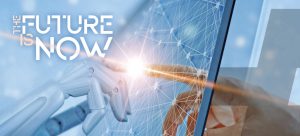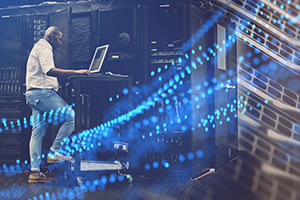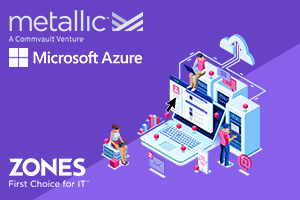6 benefits of using a CSP to manage cloud resources
As organizations move in droves toward adopting a more “remote-first” approach to doing work, IT leaders have had to put a lot of thought into data...

Just a few years ago, the thought of asking a robot to dim the lights and start playing a particular album would have seemed impossibly futuristic. Now, though, we’re living in that future. Millions of people today have their own personal digital assistants, like Amazon’s Alexa and Apple’s Siri, that have permeated our culture and brought about a digital transformation. And here’s the kicker: This evolution isn’t confined to our private lives. It’s transforming the business world, too.
In a recent McKinsey survey of corporate executives, 84% of them said that innovation was important to their growth strategies. These business leaders have come to realize that by modernizing their workplace technologies, they can make their people more efficient and truly push the boundaries of what their companies are capable of.
One shining example of this phenomenon is the rise of artificial intelligence (AI). Not long ago, the idea of imbuing a machine with a humanlike mind seemed like the stuff of science fiction, but it’s now well on its way to becoming a fact of life, and business owners are already using it to optimize processes. For example, many companies have begun deploying “chat bots” – instead of spending valuable worker hours on routine troubleshooting and tech support, they’re using AI-powered helpers to answer basic questions. And simple tasks like that are only the beginning – AI is now becoming sophisticated enough to offer real cognitive insight. Harvard Business Review has referred to this phenomenon as “analytics on steroids.”
Another new frontier in IT is the rise of augmented reality (AR). Unlike virtual reality, which transports the user into an entirely virtual environment, AR uses technology to supplement the user’s existing environment. This has a whole host of applications – for example, retailers have begun using AR to allow customers to view and model clothing in 3D online, a concept that could extend to replicating the entire in-person shopping experience in the future. Separately, engineers have begun using AR as well, as it allows remote experts to superimpose information – markings, messages, diagrams, and so on – directly onto the engineer’s field of view through smart glasses, leaving the engineer’s hands free to complete other tasks.
One innovation that goes a step further is 3D printing, which has brought about new possibilities for organizations of all types. The concept is simple – a printer reads a digital model and lays down successive layers of material to create it – but the applications can be revolutionary. Prototyping and manufacturing seem like obvious winners here, but that’s just the beginning. In healthcare, organizations can now print customized biomedical devices for patients, and the technology may soon be used for such impressive feats as creating new prosthetic limbs and even printing organs for transplant patients. From improving business processes to repairing the human body, the possibilities seem endless.
All of these innovations collectively make one thing clear: The future is here. And it’s getting brighter with every passing day. As new IT emerges and eventually grows more accessible, we can expect to see even more innovation crop up in the coming years.
Are you curious about how these and other innovations can help your business reach the next level? At Zones, we can enlighten you. Peruse our website to learn more about our Workplace Modernization efforts.

As organizations move in droves toward adopting a more “remote-first” approach to doing work, IT leaders have had to put a lot of thought into data...

As businesses have worked this year to adapt to the “new normal,” with many employees now working from home rather than convening in an office,...

In a prior generation, educating students at the K-12 level was largely a matter of simply ordering the right textbooks and teaching the material on...